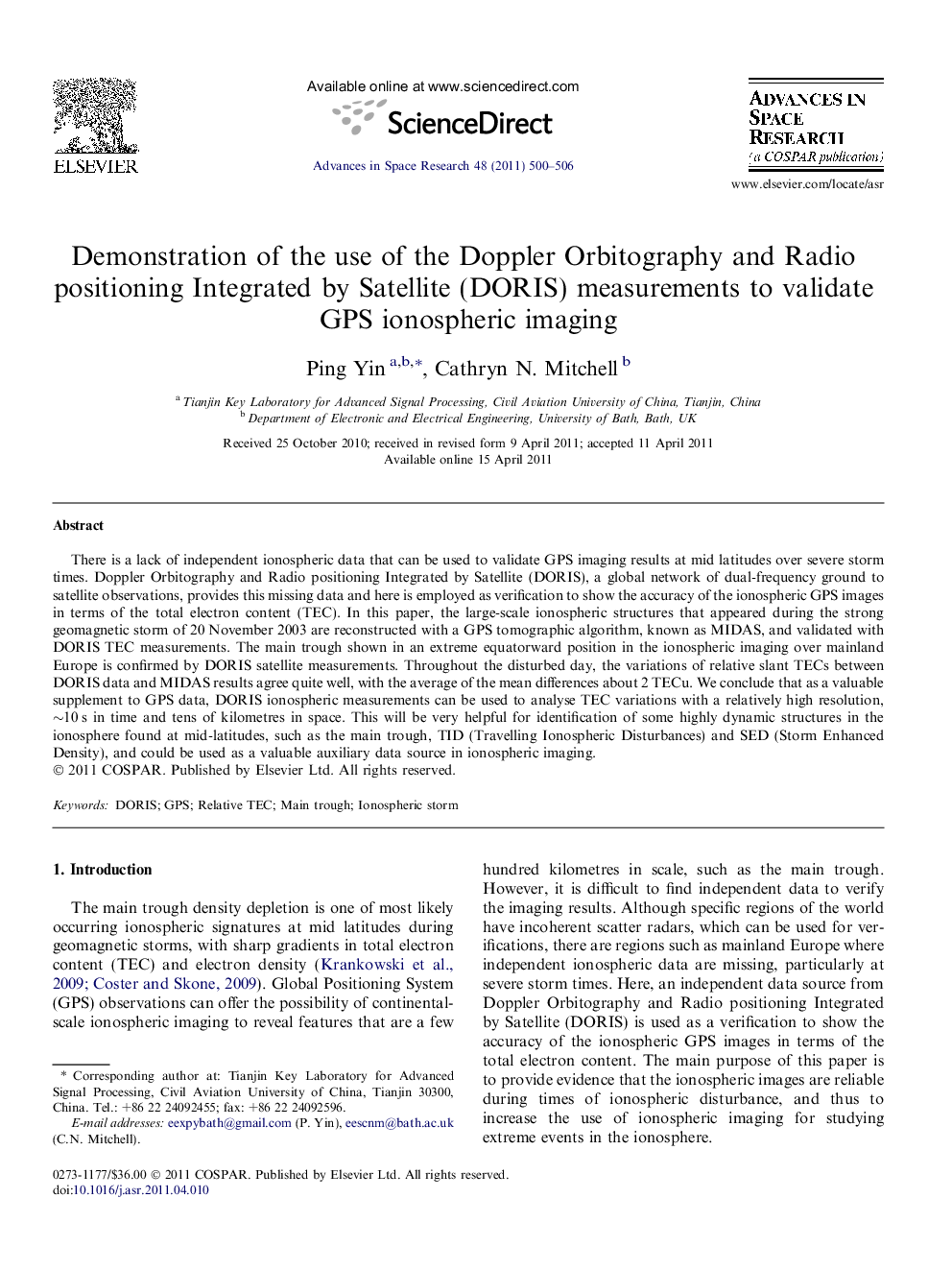| Article ID | Journal | Published Year | Pages | File Type |
|---|---|---|---|---|
| 1766488 | Advances in Space Research | 2011 | 7 Pages |
There is a lack of independent ionospheric data that can be used to validate GPS imaging results at mid latitudes over severe storm times. Doppler Orbitography and Radio positioning Integrated by Satellite (DORIS), a global network of dual-frequency ground to satellite observations, provides this missing data and here is employed as verification to show the accuracy of the ionospheric GPS images in terms of the total electron content (TEC). In this paper, the large-scale ionospheric structures that appeared during the strong geomagnetic storm of 20 November 2003 are reconstructed with a GPS tomographic algorithm, known as MIDAS, and validated with DORIS TEC measurements. The main trough shown in an extreme equatorward position in the ionospheric imaging over mainland Europe is confirmed by DORIS satellite measurements. Throughout the disturbed day, the variations of relative slant TECs between DORIS data and MIDAS results agree quite well, with the average of the mean differences about 2 TECu. We conclude that as a valuable supplement to GPS data, DORIS ionospheric measurements can be used to analyse TEC variations with a relatively high resolution, ∼10 s in time and tens of kilometres in space. This will be very helpful for identification of some highly dynamic structures in the ionosphere found at mid-latitudes, such as the main trough, TID (Travelling Ionospheric Disturbances) and SED (Storm Enhanced Density), and could be used as a valuable auxiliary data source in ionospheric imaging.
